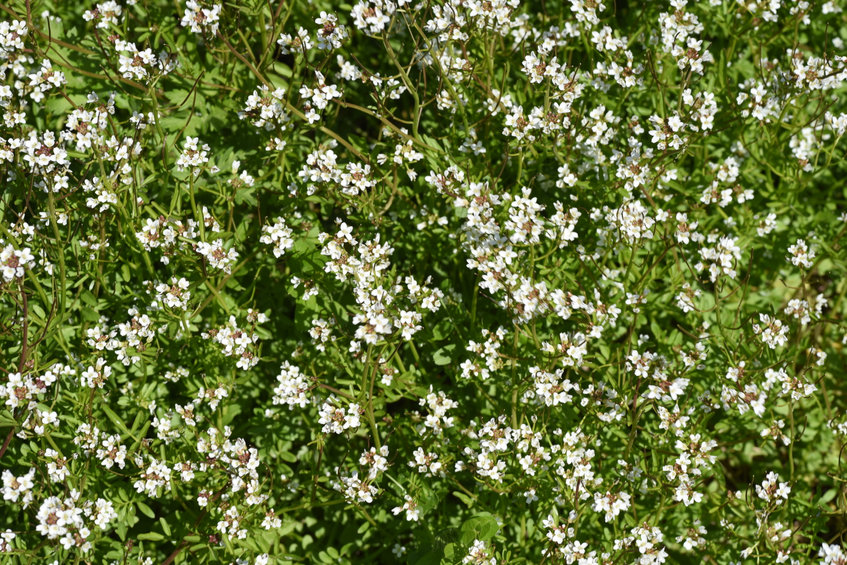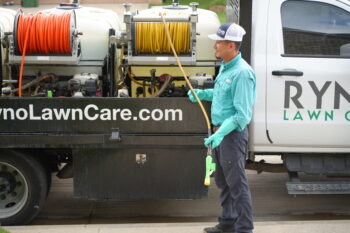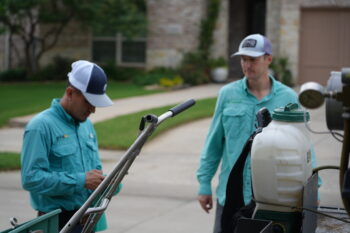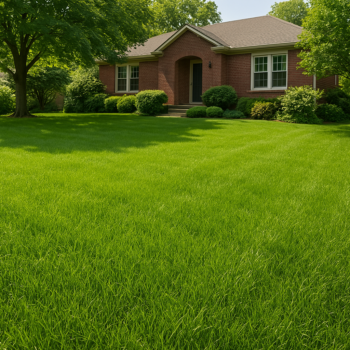As the seasons change, so does the array of weeds that invades our lawns and gardens. One such pesky weed is bittercress. Known for its rapid growth and ability to produce an abundance of seeds, bittercress will quickly take over our carefully cultivated spaces. In this article, we will delve into the world of bittercress weed control, exploring effective methods to tackle this nuisance and restore the beauty of our outdoor spaces.
Understanding Bittercress
Bittercress, scientifically known as Cardamine hirsuta, is an annual winter weed commonly found in gardens, lawns, and disturbed areas. This weed is also known as hairy bittercress.
Penn State Extension (2023) says hairy bittercress is a prolific seed producer. The seed pod is called a silique and can contain up to 30 seeds. As it matures, two valves coil within the seed pod. This allows the silique to explode, propelling seeds up to 16 feet. Botanists call this mechanism ballochory, meaning ballistic seed dispersal (para. 5).
How Can I Identify Bittercress?
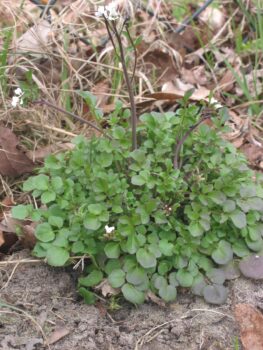
It is characterized by its unique rosette shape, basal leaves, and white flowers that bloom in clusters. What makes this weed particularly challenging is its tenacity, as it releases seeds explosively, spreading them far and wide with even the slightest touch.
Lowenstein (2020) informs the first true leaves are heart-shaped, followed by compound leaves with two or more pairs of leaflets and a kidney shaped terminal leaflet. The leaves that emerge in the fall form a small rosette that will overwinter. Once the weather warms in spring, it sends up stalks of small, white flowers followed by slender seed pods known as siliques (para. 2).
Why Am I Seeing Bittercress in Spring?
While bittercress may be mistaken for an early springtime arrival, it is, in fact, a winter weed that takes root during the colder months, germinating and flowering into spring. To combat bittercress and prevent its dominance in your lawn, fall pre-emergent treatments are vital.
Read one of our other articles to learn which pre-emergent herbicide to use in fall.
However, if you find yourself facing this persistent weed in spring, options such as hand-pulling and selective herbicides can help regain control. By understanding its life cycle and implementing the appropriate measures, you can banish bittercress from your lawn, ensuring a green and weed-free haven for seasons to come.
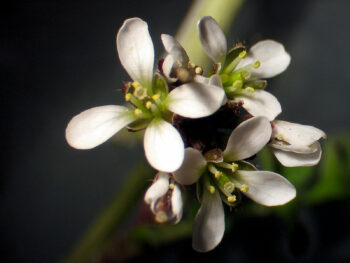
Prevention is Key
The best defense against any weed, including bittercress, is a healthy and well-maintained lawn. We offer 3 great lawn care programs designed to fit all your lawn care needs. Go to our lawn mowing service page for details.
By following proper lawn care practices, such as regular mowing, proper watering, and adequate lawn fertilization, you will promote the growth of a dense and healthy turf that naturally resists weed invasion.
Additionally, maintaining a thick layer of mulch or ground cover in garden beds helps suppress bittercress seed germination and minimize weed growth.
Again, if you don’t want to find bittercress sprouting in spring, you must apply pre-emergent herbicides in fall.
Manual Removal
For small infestations, manual removal is an effective way to control bittercress. Ensure you remove the entire plant, including the roots, to prevent regrowth.
It is crucial to pull the weeds before they flower and produce seeds to avoid spreading the problem further. Remember to properly dispose of the pulled weeds to prevent reseeding or accidental dispersal.
Mulching and Weed Barrier
For your garden, apply a layer of organic mulch to the soil surface. Mulching not only inhibits weed growth by blocking sunlight but also helps retain soil moisture and regulate soil temperature.
Additionally, utilizing weed barriers, such as landscape fabric or cardboard, underneath mulch or ground cover, can provide an extra layer of protection against bittercress and other weeds.
Chemical Control
In cases of severe bittercress infestations or when manual removal is not practical, herbicides can be used as a last resort. Selective herbicides targeting broadleaf weeds, such as those containing active ingredients like 2,4-D or dicamba, will effectively control bittercress while minimizing harm to desirable plants.
However, it is crucial to carefully read and follow the label instructions and take precautions to avoid damage to non-target plants or grass. Consider consulting with a lawn care professional to ensure safe and effective herbicide application. Head over to our lawn fertilization and weed control service page for details.
Maintaining Vigilance
Due to its prolific seed production and tendency to resprout if left unaddressed, regular monitoring and maintenance are essential for long-term bittercress control.
Perform routine inspections of your lawn and garden, promptly removing any bittercress plants that may have emerged. By staying vigilant, you significantly reduce the likelihood of a bittercress resurgence.
Conclusion
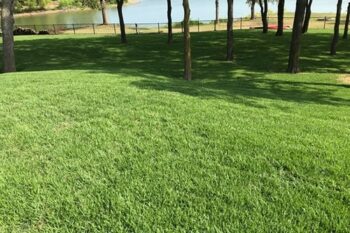
Bittercress weed control requires a multi-faceted approach that combines prevention, manual removal, mulching, and chemical control if necessary. By implementing these strategies and maintaining an ongoing commitment to weed management, you can successfully tame the pesky bittercress.
Remember, a well-maintained lawn and garden not only enhance the aesthetics of your property but also provide a healthy environment for plants to thrive.
References
Lowenstein, David. (2020, May 4). Hairy bittercress: a weed to watch out for. Michigan State University. https://www.canr.msu.edu/news/hairy_bittercress_a_weed_to_watch_out_for
Penn State Extension. (2023, July 5). Hairy bittercress: a winter annual weed to watch. Penn State Extension. https://extension.psu.edu/hairy-bittercress-a-winter-annual-weed-to-watch

